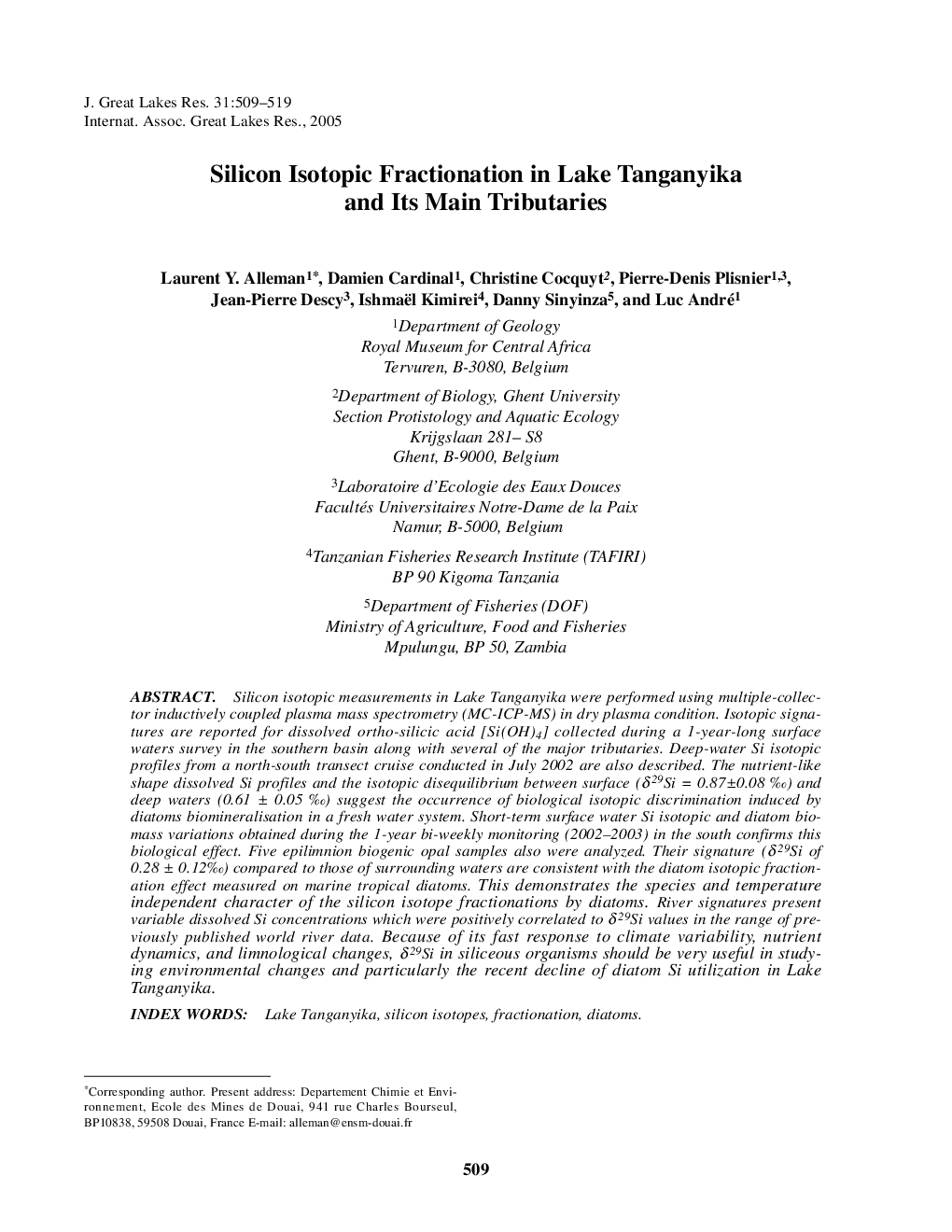| Article ID | Journal | Published Year | Pages | File Type |
|---|---|---|---|---|
| 9450145 | Journal of Great Lakes Research | 2005 | 11 Pages |
Abstract
Silicon isotopic measurements in Lake Tanganyika were performed using multiple-collector inductively coupled plasma mass spectrometry (MC-ICP-MS) in dry plasma condition. Isotopic signatures are reported for dissolved ortho-silicic acid [Si(OH)4] collected during a 1-year-long surface waters survey in the southern basin along with several of the major tributaries. Deep-water Si isotopic profiles from a north-south transect cruise conducted in July 2002 are also described. The nutrient-like shape dissolved Si profiles and the isotopic disequilibrium between surface (δ29Si = 0.87±0.08 â°) and deep waters (0.61 ± 0.05 â°) suggest the occurrence of biological isotopic discrimination induced by diatoms biomineralisation in a fresh water system. Short-term surface water Si isotopic and diatom biomass variations obtained during the 1-year bi-weekly monitoring (2002-2003) in the south confirms this biological effect. Five epilimnion biogenic opal samples also were analyzed. Their signature (δ29Si of 0.28 ± 0.12â°) compared to those of surrounding waters are consistent with the diatom isotopic fractionation effect measured on marine tropical diatoms. This demonstrates the species and temperature independent character of the silicon isotope fractionations by diatoms. River signatures present variable dissolved Si concentrations which were positively correlated to δ29Si values in the range of previously published world river data. Because of its fast response to climate variability, nutrient dynamics, and limnological changes, δ29Si in siliceous organisms should be very useful in studying environmental changes and particularly the recent decline of diatom Si utilization in Lake Tanganyika.
Related Topics
Physical Sciences and Engineering
Earth and Planetary Sciences
Earth and Planetary Sciences (General)
Authors
Laurent Y. Alleman, Damien Cardinal, Christine Cocquyt, Pierre-Denis Plisnier, Jean-Pierre Descy, Ishmaël Kimirei, Danny Sinyinza, Luc André,
